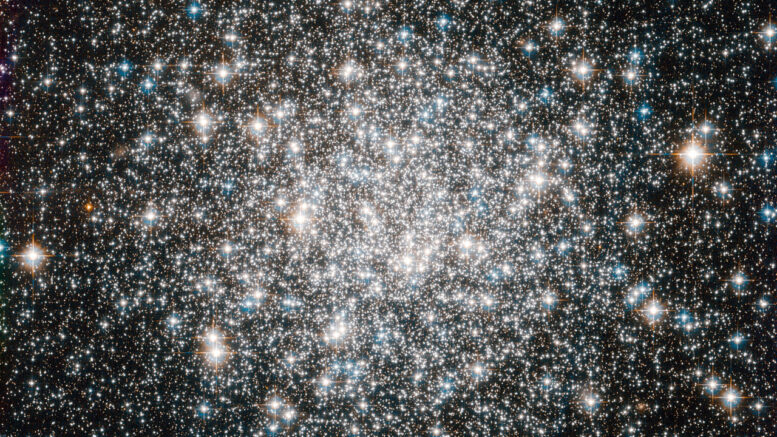Discovered by Charles Messier in 1780, Messier 68 is a dense collection of stars known as a globular cluster. Mutual gravitational attraction amongst the hundreds of thousands or even millions of stars in such a cluster keeps stellar members packed tightly together for many billions of years. Messier 68 is located in Hydra, the largest constellation in the sky.
| Description | |
| Visible From Pacific Northwest | January to April |
| Best Time To Observe | January |
| Minimum Size Of Viewing Device | 4 inch telescope |
| Object Type | Globular Star Clustere |
| Designations | Messier 68, M68, NGC 4590, GCl 20, C 1236-264, HD 110032, MWSC 2059 |
| Right Ascension | 12h 39m 27.98s |
| Declination | -26°44’38.6” |
| Constellation | Hyrda |
| Number Of Stars | More Than 100,000 |
| Apparent magnitude | +9.67 |
| Apparent dimensions | 11′ |
| Object Radius | 53 light years |
| Distance From Earth | 33,600 light years |
History
Messier 68 was one of Charles Messier’s original discoveries. The French astronomer found the cluster and catalogued it on April 9, 1780. He described it as a “nebula without stars below Corvus & Hydra,” adding that “it is very faint, very difficult to see with the refractors; near it is star of sixth magnitude.”
William Herschel was the first to resolve individual stars in the cluster in 1786. He offered the following description: “A beautiful cluster of stars, extremely rich, and so compressed that most of the stars are blended together; it is near 3′ broad and about 4′ long, but chiefly round, and there are very few scattered stars about.”
John Herschel catalogued the cluster as h 3404 in 1836 and later added it to the General Catalogue as GC 3128. He described M68 as a “globular cluster; irregularly round; gradually brighter toward the middle; diameter in RA = 12…15 sec [3.0 .. 3.75′]. All clearly resolved into stars of 12 m; very loose and ragged at the borders.”
Admiral William Henry Smyth wrongly credited Messier’s friend and colleague Pierre Méchain for the discovery of M68, and a number of sources have picked up the error.
Locating M68 In The Sky
Messier 68 can be found 3.5 degrees southeast of Kraz, Beta Corvi, one of the stars that form the rectangle of the constellation Corvus. The best time of year to observe the cluster from southern latitudes is during the spring. It stays very low above the southern horizon for northern observers and is not an easy target.

Viewing M68
In binoculars, the cluster appears as a faint patch of light and one needs at least a 4-inch telescope to resolve the brightest stars.
6-inch instruments resolve the cluster’s outer regions and halo, which has an apparent diameter of 12 arc minutes. Large telescopes resolve stars throughout the cluster, including the core.
Photographing M68
Globular clusters are honestly low hanging fruit if you have a quality refractor. Short exposures are the best option for globular clusters for imaging as short exposures will not saturate the star cores and it is far easier to preserve the star colors both in the cluster itself and in the surrounding sky.
Messier 68 can be hard to find and gather detail from in smaller telescopes. Therefore, it is recommended to utilize a bigger telescope with guiding so that the crispness can be maintained. There are not a whole lot of bloggers who doo astrophotography that have posted guides to help, but the best advice is to use the available photographs on astrobin and cloudy nights to help find a similar build as yours.
Sources And Further Reading
Descriptions of all of Messier Objects can be found here.
https://www.nasa.gov/feature/goddard/2017/messier-68
https://freestarcharts.com/messier-68

Be the first to comment on "Messier 68"